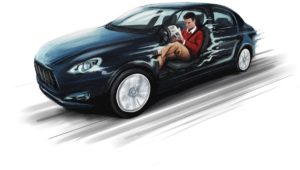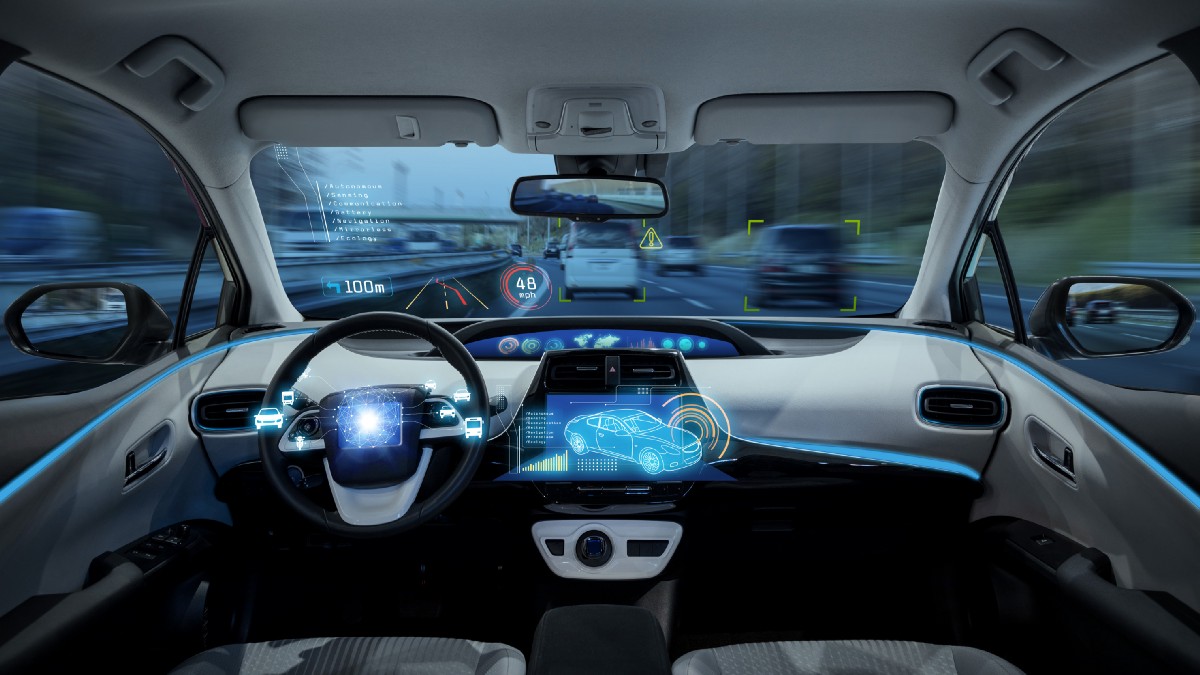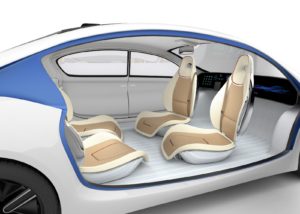User interface vs. face-to-face
Posted by: Brion EriksenDo you prefer Mr. Roboto for your customer service? I’m not completely sold.
In their 1983 single “Mr. Roboto,” the Chicago rock band Styx envisioned a campy dystopian future where robots substitute for manual labor and, incidentally, rock and roll is outlawed.
Well, 35 years later that once-critically-panned/now-guilty-pleasure hit seems to have been half-correct. “Robots” in the form of algorithm-driven streaming services are helping keep popular music alive, but automation is indeed also continuing to supplement, augment, and replace people and jobs.
In the three decades since that time, electronic and digital interfaces have been enabling unprecedented efficiency and convenience in customer service and manufacturing. For consumer transactions in particular, we’ve seen ATMs supplement bank tellers, kiosks augment airline agents and grocery clerks, and pay-at-the-pump systems completely replace gas station attendants.
E-commerce transactions have also, of course, allowed us to evade human contact with phone representatives, brick-and-mortar stores, and travel agents. Lately, some of these transactions have migrated to smartphones, where you can hail an Uber or unlock a Zipcar. Apple’s Siri and Amazon’s Alexa have also arrived as mostly in-the-home technologies for now, but along with chatbots they’ll widen the “net” further of things (through the “Internet of Things”) driven by artificial intelligence.
Up next: Restaurants
You may have noticed this trend at restaurants. Table-side digital kiosks are popping up at Olive Gardens and Applebees, and you can place your order on an iPad at the gate-side “Minnibar” at the Minneapolis-St. Paul airport. These tools mainly assist the waitstaff and bartender with drink re-orders and payment processing. The human staff is still involved in placing your initial order, bringing your food and checking in on your satisfaction.

Arriving recently on the fast-casual restaurant scene is Eatsa, featuring virtually no waitstaff or counter help. Their (delicious-looking) quinoa bowls are prepared behind-the-scenes (by humans, we assume) based on your order from a digital screen, and delivered to you through a Star-Trekky portal window.

Politics intersects
President Trump’s original choice for Secretary of Labor raised eyebrows, partially because of his frank talk about work automation. Andy Puzder happens to be the CEO of CKE Restaurants, the holding company for Hardee’s and Carl’s Jr. In the past two years before his nomination, Puzder has written opinion pieces for the Wall Street Journal making some interesting commentary and arguments about digital UI’s, AI and robots, and intersected them with wage costs and customer demand.
You should be able to read the piece as free content as a non-subscriber to WSJ; however you may require a subscription.
Fortune.com has a similar article on the topic that features Puzder and reflects many of his same thoughts.
Puzder’s nomination was eventually withdrawn due mostly to various other personal issues, but many members of Congress also questioned why an executive who touts replacing workers with robots—and, in conjunction with this thinking, questions raising the minimum wage—would be the right choice for Labor, and I agree. For the purpose of this essay, however, I think Puzder makes some interesting observations about consumer preferences, and speaks bluntly about doing the economic math.
Before I succumb further to the strong gravitational pull of the politics surrounding Mr. Puzder and the new Cabinet, I’ll remain focused on the picture he paints of customers preferring to transact with a kiosk instead of a human—and what that means.
I’m (usually) a people person
I usually prefer to interact with a human. I’m not one of those folks who Puzder describes in his article who line up at the digital screens while a lone remaining counter attendant waits, disengaged. If I encounter that scene, I’m making a beeline for the personal service. I scour the attended grocery check-out lanes for short lines before bailing out to my longtime pet peeve, the self-scanners.
My boys would often laugh at how frustrated I’d get when using the self-scan lane at the supermarket. Something would inevitably go wrong between the scanner and scale, the “help” light would begin blinking, the mechanical voice would call loud attention to my plight, and a helpful young steward would come over, swipe their employee card, and flush out the error. I’d suppress the urge to ask the innocent youngster “why do they even have these? They still need to pay you to constantly monitor them anyway!?”
I’ve noticed significant improvement in self-scan function recently, and my angst has subsided. Check-out attendants are still there to monitor security and provide help, which seems more complementary. It’s good to know that someone is there, but I no longer have this customer experience where I’m doing most of the work while someone is being paid to be on standby, ready to jump in and help just in case.
The same goes for kiosks in restaurants and bars. I’ve visited an Olive Garden and the aforementioned Minnibar, and found that the waitstaff and bartender needed to remain well-connected to the whole process even though I had to also fiddle with the iPad. They saved some time when I was ready to pay and leave, circumventing that moment where your companion polishes off her cocktail and says “are we ready to go?” and you reply “still waiting for the check,” or “just need to get my card back.” So that was nice. And at the airport I felt like the bartender would rather I just ignore the iPad, implying “it will be easier and better for both of us.” Overall the joint digital-human customer service partnerships didn’t seem to be gelling quite yet.
Putting customers first
Looking at Puzder’s comments and reflecting on my experiences, I can recognize that technology-driven customer service is continuing to find its footing while it continuously evolves. Electronic and digital transaction interfaces take steps and leaps forward, and then when a brand-new paradigm is injected into the ecosystem, things seem to take a small step back. Everything is hurtling forward at breakneck speed and sometimes customer service takes a back seat to the bottom line (and people’s jobs sometimes get caught in the crossfire).
Personally, I like the idea of taking a bit more care to ensure that we’re always putting customers first before sacrificing user experience for profit margins through the narrow mechanism of reducing purely for the sake of labor costs, which is always a faulty equation. Profits are of course, in the most basic terms, the difference between your revenues and expenses. But value is also a component of profits. We should always think about how digital interfaces and other advancements like artificial intelligence and virtual reality enhance the value a customer places on the experience. What not only brings customers in the door, but keeps them coming back?
- Are customers in a hurry? If they have no use or need for human interaction, an all-digital, self-serve approach will be preferable and we’ll see more on-the-go “giant vending machines” like Eatsa, for example, for a quick-grab before or during the work day. Carl’s Jr.’s CEO seems to have his eye on this approach as well.
- Do customers want to be attended to? This is where kiosks in sit-down restaurants can get a little awkward. Does the digital screen sacrifice a desired personal touch for fewer waitstaff and a bit more order accuracy? As this approach matures, kiosks, tablets and waiters should continue to have a more seamless role in providing service where everyone’s working together.
- In the most posh, upper-scale restaurants, replacing a knowledgeable and highly attentive waiter with a digital kiosk would be out of place, but any restaurant—from fast food to fine dining—could benefit from a more streamlined digital payment system. Think checking out at the Apple Store, where there are no registers to speak of. I don’t know what they do if you want to pay in cash.
- Starbucks customers leverage their app and a “membership” to easily order-ahead so that they can just walk into the store, grab their drink and go with minimal waiting-around friction. Could some food services go all the way with the “Just Walk Out” technology of Amazon Go? Probably! Eatsa could go that route pretty easily, it seems.
Digital technologies are amazing and have improved the quality of life in myriad ways, from safety to efficiency to pure fun and enjoyment. The possibilities are endless and new transaction models are coming online all the time. So, without a doubt there is a place in just about every industry for exciting enhancements. But we should always ask the two-part question:
- First, are we replacing too much human interaction with the customer?
- And are we replacing human interaction purely to save labor costs?
The optimal experience
As the owner of a digital agency, one would think that I’d be excited about all the opportunities out there for our skill sets to design interfaces. Of course — if that’s the best user experience. I am more concerned about the overall experience, not just what happens on a screen. If a customer will receive the maximum value from your product by whizzing through an all-screen/zero-human user flow, I’m thrilled to design that. But first we need to begin by looking at the entire transaction process holistically. It’s imperative that business leverage technology as best they can, but companies and brands should examine specifically how technology, their people, and their customers can work together.
The aforementioned Starbucks and Apple Store experiences are good examples. Technology helps streamline the transaction process but you still have access to a human being to get your specialty latte just right or show you how to switch your iPhone 7 from defaulting to taking photos in Live mode.
In those restaurants with table-top kiosks, those could be used in conjunction with a tablet that the waiter carries, helping ensure order accuracy but also helping with order customization. Waiters could wait on more tables and maintain a higher level of attentiveness when the tablet augments the process of notifying when food is ready to be served, drink refills and re-ordering, up-selling, and handling most of the payment transaction process.
A restaurant that runs at optimal efficiency prevents many of the factors that lead to bad customer experiences: Incorrect orders, and long wait times to get a table and then to get served and cashed out. Instead, tables turn over faster, an extra drink or two is ordered, perhaps even that elusive dessert up-sell. Customers may be willing to absorb slightly higher pricing at such an establishment, and gratuities may not take a hit despite the service being assisted by the kiosk. Finally, all of this may allow for some trimming of labor costs but fall well short of a staffing overhaul.
One of many examples
The Puzder nomination and Eatsa stories have me more fixated on restaurants, but there are many more examples of fascinating intersections between customer service and ever-burgeoning technologies. Everyone talks about what will be the next AirBnB or Uber, and soon “the next Eatsa” may be invoked.
One of my favorite follows on Medium, Tim O’Reilly (of O’Reilly publishing fame) has a great post as part of his “WTF: What’s The Future?” series: “Don’t Replace People. Augment Them.” I think that’s where I’m going with my thoughts above on my Utopian restaurant (hey … how does “Café Utopia” sound?)
I still value human interaction, and I like O’Reilly’s idea on having the imagination to think beyond “what jobs can we replace with machines?” I’ll trade a little extra time for getting personal attention, even if I barely have the time. But I like that I’m getting the personal touch at my favorite stops these days alongside some slick digital tools—far fewer pens that don’t work, trying to sign curled-up paper receipts; and not so many paper rewards punch cards that get forgotten then need to be “combined.”
Now if only everyone could get on the same page when it comes to using that chip card slot or not. Seeing the makeshift “NO CHIP!” cardboard stuffed into the slot sets all this cool tech stuff back a few years doesn’t it? Maybe that will be a topic for a follow-up post.
Or, driverless vehicles 😉
“SiriCar, Drive Faster. We’re Running Late…”
Posted by: Brion Eriksen…and other dilemmas on the Autonomous-Vehicle horizon. Let’s explore the next three phases of our driverless future.
The arrival of self-driving, driverless, and (or is it “and/or”?) autonomous vehicles is beginning to form a fuzzy shape on the horizon. Press releases and tech pundits alike are setting their sights on 2020. Or the 2020’s. Or 2025 … or by the end of that decade. To be certain, the technology is developing at a rapid pace, looking and sounding truly amazing. But there is also a great deal of uncertainty surrounding exactly how and to what extent all of these paradigm-shifting advancements will change our lives. There are layers upon layers of controversies and questions, and the top layers all involve ethical dilemmas before you even get down deeper into the vast challenges around logistics, infrastructure, and automation.
The number one F.A.Q.
The University of Michigan’s Mobility Transformation Center is a test facility (a simulated village called “M City”) and proving ground for connected and automated vehicle technology. Their web site http://www.mtc.umich.edu has a helpful F.A.Q. page, where one of the questions and its answer really stands out to me (emphasis mine):
Q: What are the barriers to progress?
A host of advances in such areas as connected and automated vehicle systems, multi-modal transportation, traffic performance management, fractional vehicle use, as well as in new fuels, novel engine design, alternative energy sources, and advanced materials, offer great promise to address the challenges and, in the process, to truly revolutionize mobility in societies worldwide. Individually, none of these advances will have the impact needed; we must look at our mobility system as a whole. To date, there has been little work on how to integrate the technical, economic, social, and policy considerations to create a viable mobility “system” that meets the dynamic needs of a changing society.
While the technology is compelling, this new “mobility package” needs to be highly attractive to users throughout society and needs to be commercially successful, creating many new business partnerships and opportunities.
Here’s a quick YouTube glimpse at what’s going on at M City.
Tech giants like Tesla, Google, Uber and Apple have all been connected to driverless car projects, as well as the major traditional car manufacturers. Each claims to have a plan, a strategy, and a time horizon. There have been many separate discussions, articles and essays by futurists and pundits about different technologies and moral dilemmas. States like California are beginning to prepare legislation to pave the way for … wait a minute. For what? As the U of M F.A.Q. articulates, very little of all of this technology has begun to collectively form a road map toward any sort of unified architecture. I’m a Stephen Covey “begin with the end in mind” guy and I believe the time has come to begin thinking about the need for total integration, for the “system,” the “mobility package.” And, as part of that planning, the industry also needs to find the best platforms for clearly communicating the path forward to the commuter and traveler marketplace so that they begin to buy into the excitement and opportunity. Right now, the future market of buyers who would need to hand over the keys and total control of their minivans, SUVs and sports cars view the driverless future with a lot of trepidation and confusion, and a little bit of fear.
Here are a couple articles, in case you need a further primer on the potential technologies and moral dilemmas. Then, let’s keep going by breaking down that F.A.Q. with a few more of my own.
Phase 1: Keep your eyes on the road and your hands on (or off) the wheel
What if we simply roll with the current trend of making today’s cars smarter and safer?
New car models are already equipped with amazing technology that is being derived from autonomous vehicle research and development. In fact, these are practically the only features car companies are advertising today: Parallel parking assist, back-up cameras, lane change sensors, automatic braking. These advancements are focused on safety but will continue to help manage fuel economy as well.
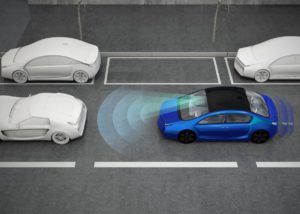
Because these “smart” technologies are becoming so pervasive, more and more of these types of cars are taking over the roadways. Within the next decade, a very high percentage of all cars on the road will be assisting drivers avoid their own common mistakes and defend against others. In the early 2020’s we may find that highway fatalities and injuries have decrease significantly, and are trending down rapidly.
Then what? Does the industry continue to aggressively pursue taking the human driver completely out of the equation to even further bolster safety and efficiency? Or do manufacturers and developers invest in other aspects of the vehicle technology such as electric/battery power and more charging stations? Consumers may find themselves comfortable living in this world, where they are still in control of their commute, can drive a sports car or SUV, and not be forced into riding in a Rolling iPhone or Android-On-Wheels. These enhanced-yet-still-human-controlled products would also help make the ride-sharing market safer and more efficient as well. Overall, this path keeps paid drivers — from long-haul to UPS to Uber — employed, as well.
Phase 2: We all need to share the road
More automation gradually but unrelentingly works its way onto the road.
Let’s assume the above scenario continues to come to fruition into the early 2020’s, but the big manufacturers have their driverless cars and related “connected infrastructure” technologies ready to do as well: They’re tested, municipalities think they’re prepared, some early-adopters hit the road without a steering wheel. What does that world look like?
This phase (let’s guess it at 2025–2035) will present an interesting rubicon: If consumers aren’t totally bought into the many paradigm shifts and involuntary life hacks that occur, or if the level of traffic safety and/or energy efficiency does not reach predicted targets … what then? Driverless adoption will continue to advance but it may slow, and impact the overall health of an industry that has probably invested billions multiple times over. Does advancement eventually “hold” and driverless vehicles find their nichés in certain ride-sharing, delivery and transit services, while the consumer marketplace dictates that they want to literally keep their hands on the wheel?
Of course, the opposite could happen as well. In 2030 driverless adoption could be moving full speed ahead, with consumers climbing in their back seat living rooms and offices and enjoying their productive commutes. One of the best sales pitches I’ve heard describes your driverless car dropping you off at work and going to park in a massive industrial ramp nearby but out of eyeshot of otherwise luscious, parking-structureless environs. When you’re ready to leave work, you summon your GoogleCar to first go pick up your children from band practice before coming to fetch you. Everyone shares the thoroughfare in their roving family rooms, waving to each other and to the poor suckers still forced to keep their eyes on the road in their merely driver-assisted vehicle.
Phase 3: We live inside a computer
Like a circuit board on silicon, our highways transport us around like bits and bytes to our destinations.

I feel like I’m skipping WAY ahead here, but the logical sequence of this technology is to first assist drivers, then augment drivers and driving, and then eventually replace it all, and replace it completely. Otherwise, we might as well remain in Phase 1 … Phase 2 could offer a world full of uncomfortable juxtapositions and moral dilemmas, with human drivers getting fed up with confused, cautious Roomba-mobiles. But if we can get to Phase 3, this is where everything speeds up like never before. If there are no human-controlled cars on the road and all robotic, connected vehicles are communicating with each other in a grand symphony orchestra of traffic flow, then the possibilities and benefits are pretty remarkable: More safety, more time savings, less fuel usage, less parking real estate. Lanes can be narrower, we may not need garages, or even our own cars or car insurance. That expense can be put to other uses in our lives. Utopia and Nirvana rolled into one.
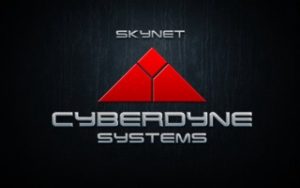
But … Many jobs will be replaced. Will this Utopian Nirvana be only for elites, while the less fortunate actually become less mobile than they are now? Also, we’d be at the mercy of a giant, potentially hackable, SkyNet-like “system” as the M City web site alluded to.
And how do we get “there” from “here”?
Does the U.S. Government set a “Zero Day” in 2030 or 2040 when all traditional or assisted cars must be off the road, and driverless vehicles take to all the new infrastructure in one simultaneous, world-changing swoop? And speaking of “world-changing:” Is this a global event? Will the “haves and have nots” who can afford and participate in this revolution also apply to rich vs. poor nations?
Something this far-reaching and earth-shifting is going to need to be communicated. Clearly, in simple terms, without bias and with a focus on the common good of everyone.
It’s a huge leap, that’s for sure. One that skeptical consumers may not be ready for any time soon, especially in today’s political climate. Now may not be a good era to espouse a technology revolution that is perceived as being based in elitist Silicon Valley and replacing yet more jobs with automation. Something this far-reaching and earth-shifting is going to need to be communicated. Clearly, in simple terms, without bias and with a focus on the common good of everyone. And that, again, is unfortunately not something that we’re seeing or hearing a lot of in today’s political climate.
Back from the future
In the present day, it’s now time to communicate the vision (begin with the end in mind)
With the “Big Three” tech companies Apple (probably), Google and Elon Musk’s Tesla firmly behind autonomous vehicles, alongside Detroit’s traditional Big Three, a driverless future is happening … someday. Their research and development has brought the technology to the brink of being ready to break through, and now is the time to begin communicating their progress and clarifying both the barriers and the benefits. A vision needs to begin taking shape, including an articulation of the “phases” that I outline above. These communications need to address not only the “wow” factor but also the societal and safety concerns. They’ll need to prove that the benefits far out-weight concerns, and that millions of professional drivers will not lose their livelihood. Demonstrating a predicted surge in jobs needed for manufacturing and infrastructure related to driverless technology rollout would, of course, but useful as well.
So far, communicating this vision has been fragmented among the aforementioned companies and institutions. Tech blogs and futurist essays are making best-guesses as to what the next decades will bring. Online resources like this Germany-based http://www.driverless-future.com/ are a good aggregation of what’s happening, everything that’s been done and said, but it’s more industry-focused than geared toward getting consumers excited.
I’m raising my hand in the air as someone who’s interested in helping with this communication effort, even if at first it’s continuing to participate in the conversation.
